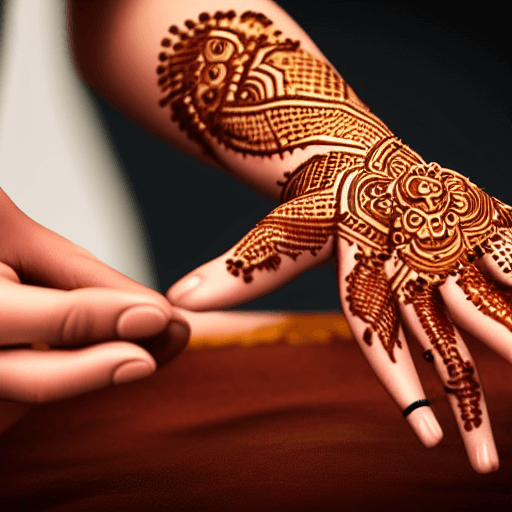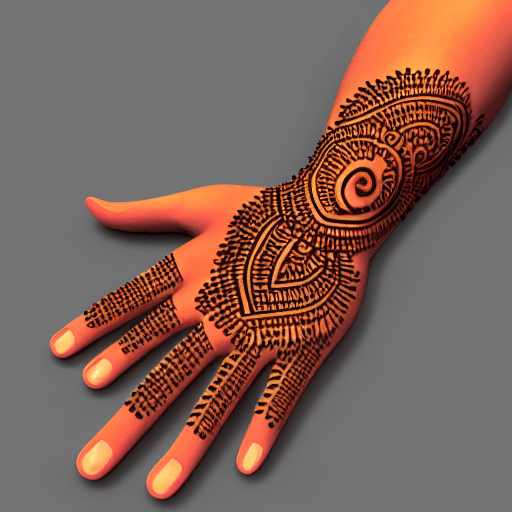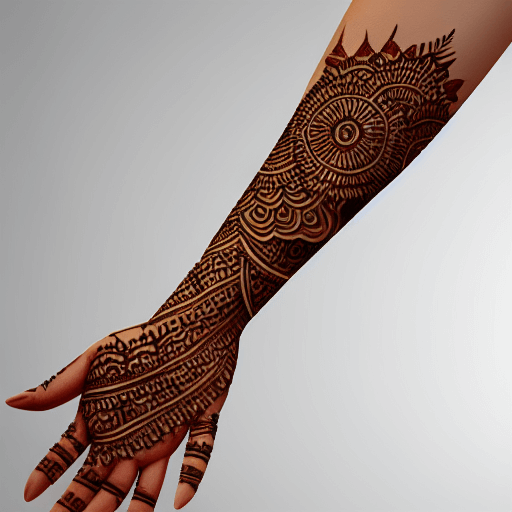How long does it really take for henna to dry, and what factors influence this crucial process? Understanding the drying time is key to achieving a vibrant, long-lasting henna stain, transforming a simple body art application into a beautiful, enduring expression.
The art of henna, a tradition celebrated across cultures for its elegance and ephemeral beauty, is more than just applying a paste. The drying process is a critical element that determines the final color and longevity of your design. It is a careful dance between the paste, the skin, and the environment.
To better understand the art of Henna, here's a look at some of the important aspects of the henna process:
| Aspect | Details |
|---|---|
| Drying Time | Typically takes between 30 minutes to 2 hours. However, it can vary. |
| Factors Influencing Drying Time |
|
| Initial Surface Drying | The surface may dry to the touch in 5-10 minutes, but full hardening takes longer. |
| Smudging Prevention | Allow the paste to dry for at least 30 minutes before touching it to prevent smudging. |
| Optimal Application Time | Leave the paste on for as long as possible, ideally several hours, or even overnight, for a darker stain. |
| Aftercare Importance | Crucial for a rich and vibrant stain. Avoid getting the design wet for 24 hours, and keep it moisturized. |
| Special Considerations for Black Henna | Black henna usually takes 20-30 minutes to dry. Always be cautious about the ingredients in black henna, as some can cause chemical burns. |
| Application Time | A simple design can take 5-10 minutes. The complexity of the design affects the application time. |
| Speeding Up Drying | Use a blow dryer on a cool setting, apply dry heat with caution, and keep the design warm. |
The time it takes for henna to dry is not simply a matter of waiting; it's a dynamic process influenced by a variety of factors. The thickness of the paste is a key element. Thicker applications naturally require more time to dry fully. The humidity in the air also plays a significant role; high humidity can slow down the drying process, while dry, warm climates tend to speed it up.
The temperature of your body is also a factor. The warmer your skin, the faster the henna paste will dry. This is why it's often recommended to keep your henna design warm, either by applying dry heat with caution or simply by keeping the area covered.
It's important to differentiate between surface drying and complete drying. The surface of the henna paste might feel dry to the touch within 5 to 10 minutes, but the paste underneath will still be wet. It typically takes around 30 minutes to two hours for the henna to dry completely. This distinction is crucial because touching or bumping the design before it is fully dry can cause smudging, ruining the intricate details and leading to an uneven stain.
The amount of time the paste remains on the skin directly impacts the color and longevity of the stain. For optimal results, it's recommended to leave the paste on for as long as possible, ideally several hours, or even overnight. The longer the paste stays on, the deeper and richer the color will be, and the longer your henna design will last.
Once the henna paste is dry, it will transform into a muddy, flaky texture. Avoid rubbing the design, as this can cause the paste to scrub off before the stain has fully developed. Some of the paste will naturally flake off on its own, which is perfectly normal.
Henna aftercare is just as important as the application itself. It's what separates a good henna design from a truly exceptional one. One of the most crucial aftercare steps is to avoid getting your henna tattoo wet for the first 24 hours. Water can cause the henna paste to lift prematurely, affecting the stain's development. Applying and keeping the area moisturized helps the stain last longer.
To achieve a vibrant, deep color, it's recommended to keep the henna design warm. Apply dry heat, but with caution. It's essential to avoid excessive flaking of the paste, which can happen if the area is exposed to friction or other irritants.
Knowing how long to wait ensures your henna looks its best, lasts longer, and remains vibrant. Therefore, patience and proper aftercare are essential to the art of henna.
The application of henna is not a race; it's a delicate dance between the artist, the paste, and the skin. The time it takes for henna to dry, the care taken during aftercare, and the environment where the design is created all play vital roles. The goal is a beautiful piece of body art that celebrates tradition, creativity, and personal expression.
Consider the climate and adjust henna application accordingly to achieve the desired drying time.
When considering your next henna design, remember that the key to stunning results lies not only in the skill of the artist but also in the patience and care you provide throughout the drying and aftercare process. This is what will make your henna a true work of art.


